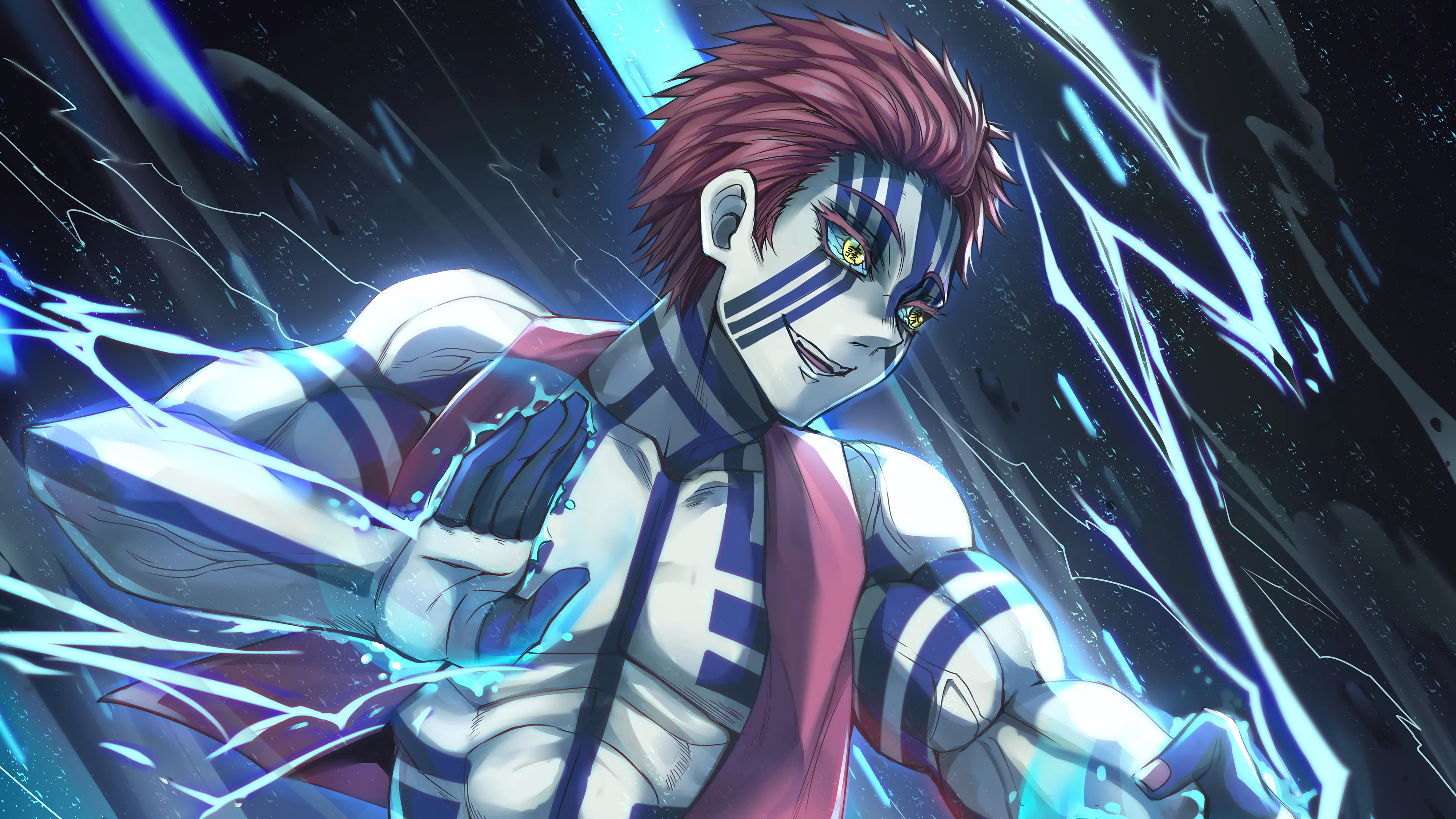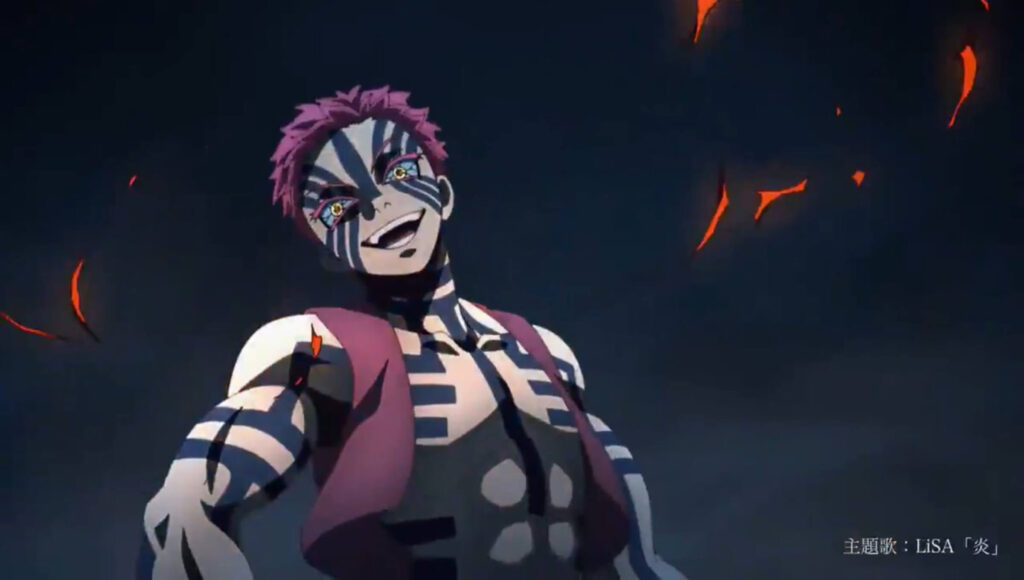Writing Fan Fiction Inspired by Akaza in Demon Slayer
Akaza, a prominent character in the anime and manga series Demon Slayer, continues to captivate fans with his complex personality, fierce combat skills, and the tragic depth of his backstory. The allure of Akaza lies not only in his formidable presence as a member of the Twelve Kizuki but also in the emotional conflicts that define him. Writers and fans alike are drawn to his multifaceted nature, prompting many to explore alternate narratives and scenarios through the lens of fan fiction. Whether you’re looking to delve deeper into his motivations or craft entirely new adventures, the world of fan fiction provides an exciting platform for creativity. This article will explore various aspects of writing fan fiction inspired by Akaza in Demon Slayer.
Understanding Akaza’s Character and Motivations
To create compelling fan fiction centered around Akaza, it is essential to understand his character deeply. His backstory, motivations, relationships, and moral dilemmas play crucial roles in shaping who he is. By dissecting these elements, writers can generate more authentic and nuanced stories.
>>> Buy now: Akaza Demon Slayer Button Up Hawaiian Shirt
Exploring Akaza’s Tragic Backstory
Akaza’s journey began with a tumultuous childhood marked by loss and hardship. Raised in a poor family, he witnessed his father’s abuse towards his mother, leading to her eventual death. This traumatic experience instilled in him a severe disdain for weakness, which later manifested in his desire to eliminate it at all costs.
The pain of abandonment also plays a significant role in Akaza’s development. After losing his loved ones, he became detached from human emotions. This emotional void might make readers question whether he is truly villainous or simply a product of his environment. Exploring his past allows writers to sympathize with him, creating a character that resonates with audiences on a deeper level.
Additionally, his transition from a human to a demon offers a rich canvas for storytelling. A writer could choose to depict this transformation, exploring the psychological changes that accompany such a drastic alteration. Integrating themes of regret, loss, and the search for redemption can provide a compelling backdrop for any fan fiction narrative.
Akaza’s Philosophy on Strength and Weakness
One of Akaza’s defining characteristics is his fixation on strength. He believes that true worth is determined by one’s ability to endure and overcome challenges. This philosophy is deeply rooted in his past experiences, where he saw weakness as a precursor to suffering.
In fan fiction, this belief system can be explored further. Writers can create scenarios that challenge Akaza’s notions of strength. For instance, situations where he encounters individuals who are physically weak but possess immense inner strength can push Akaza to reconsider his ideals. Such interactions would not only add layers to his character but also present opportunities for growth and change.
Furthermore, contrasting Akaza with other characters who embody vulnerability—such as Tanjiro Kamado—can lead to engaging dynamics. The conflict between strength and compassion could serve as a thematic element throughout the story, encouraging readers to question their perceptions of power and resilience.

Relationships and Interactions with Other Characters
Akaza’s relationships with other characters in Demon Slayer also contribute significantly to his narrative. His interactions with upper-rank demons, particularly with Muzan Kibutsuji, reflect his loyalty and ambition. Meanwhile, his encounters with demon slayers unveil his disdain for those he perceives as weak.
Writers can leverage these relationships to create dramatic tension and intricate story arcs. For example, fan fiction could explore a scenario where Akaza’s loyalty to Muzan is tested, forcing him to confront the consequences of blind allegiance. Alternatively, interactions with demon slayers may open avenues for unexpected alliances or rivalries. Akaza’s relationship with Doma, another upper-rank demon, could provide additional layers to explore; their differing views on humanity and strength enable a rich tapestry for narrative exploration.
These relational dynamics not only offer depth to Akaza’s character but also pave the way for intriguing plot developments. Personalizing these interactions can lead to fresh perspectives and creative conclusions that deviate from the original storyline while remaining true to the characters’ established personalities.
Crafting Unique Storylines Centered on Akaza
Once you have a firm grasp of Akaza’s character, the next step in writing fan fiction is to develop unique storylines that highlight his essence. This involves both imaginative plotting and careful consideration of how his character traits influence the narrative.
Alternate Universe Scenarios
One effective method for crafting unique storylines is to place Akaza in alternate universe (AU) settings. This approach allows writers to explore “what if” scenarios that diverge from the established canon of Demon Slayer.
For example, imagine a world where Akaza never turned into a demon and instead became a skilled swordsman dedicated to eradicating evil. This twist opens avenues for exploring themes of redemption and heroism. In this AU, Akaza could form bonds with characters like Tanjiro and Zenitsu, fostering camaraderie and rivalry that transcends their canonical fates.
Alternatively, a darker AU could explore what would happen if Akaza succeeded in eliminating all demon slayers. Such a narrative could delve into themes of isolation and despair, showcasing how even the strongest beings can succumb to loneliness in a world devoid of opposition. The existential crisis that follows Akaza’s triumph could create a poignant and thought-provoking storyline.

Expanding Akaza’s Inner Conflicts
Another compelling direction for fan fiction involves deepening Akaza’s internal struggles. While he presents a fierce exterior focused on strength, there is an undercurrent of regret and longing for connection within him.
A writer could examine moments where Akaza reflects on his past choices—the loved ones he lost and the regret he feels about his actions. Creating scenes where he encounters reminders of his humanity, such as visiting places from his childhood or meeting people who resemble his former self, could evoke powerful emotional responses.
Incorporating visions, dreams, or hallucinations of his deceased loved ones can also amplify his internal conflict. These manifestations could challenge his beliefs about strength and lead him to re-evaluate his path. By showcasing this duality, fan fiction can add depth to Akaza’s character, transforming him from a one-dimensional antagonist into a tragic figure shaped by circumstance.
Blending Genres and Themes
Fan fiction offers the flexibility to blend genres and themes, providing writers with limitless possibilities for storytelling. Combining horror, romance, adventure, or even comedy can yield innovative narratives that keep readers engaged.
For instance, a horror-themed Akaza story could center around his encounters with terrifying demons that mirror his fears and regrets. In contrast, a romantic subplot could explore a potential love interest who recognizes Akaza’s humanity beneath the demon facade. This character could challenge his worldview, offering him a chance at love despite his dark past.
Moreover, incorporating elements of fantasy, such as magical realism, can create surreal narratives that elevate Akaza’s struggles to allegorical levels. Engaging with different genres not only diversifies the storytelling but also allows for a broader range of emotional engagement, drawing readers into Akaza’s world in unique ways.
Techniques for Effective Fan Fiction Writing
Writing fan fiction involves more than just creativity; it requires skillful execution to effectively convey ideas and emotions. Here are some techniques that can enhance your storytelling when writing about Akaza in Demon Slayer.
Developing Strong Characterization
Characterization is paramount in fan fiction. To breathe life into Akaza and other supporting characters, writers should focus on creating distinct voices, mannerisms, and emotional arcs.
It’s beneficial to utilize dialogue that reflects Akaza’s personality—a mix of arrogance, bitterness, and vulnerability. Consider his speech patterns, word choices, and how he interacts with others. The nuances in his dialogue can reveal underlying emotions and motivations, making him feel more real to readers.
Additionally, juxtaposing Akaza’s characterization with that of other characters can create dynamic interactions. Allowing characters to clash or bond over shared experiences can reveal different facets of Akaza’s persona, enriching the narrative.
Employing Descriptive Language
Immersive storytelling relies heavily on vivid descriptions that engage the senses and paint a clear picture of the world surrounding Akaza. Writers should strive to evoke imagery that enhances the atmosphere of the narrative.
When describing battle scenes involving Akaza, for instance, focus on sensory details: the sound of blades clashing, the smell of blood, the weight of heavy emotions during combat. Environments can also play a significant role; highlighting the dark alleyways, moonlit forests, or ruins of past battles adds depth to the setting.
Through descriptive language, readers can fully immerse themselves in Akaza’s world, feeling the intensity of his struggles and victories. This technique heightens emotional engagement and strengthens the impact of key moments in the story.
Building Tension and Conflict
Conflict drives narratives forward, and fan fiction is no exception. Creating tension within the plot not only keeps readers hooked but also provides opportunities for character development.
Consider introducing external conflicts, such as confrontations with demon slayers or rival demons, alongside internal conflicts that reveal Akaza’s vulnerabilities. This duality enriches the storyline, allowing readers to witness the complexity of his character as he navigates challenges.
Pacing is also critical in building tension. Gradually escalating stakes, utilizing cliffhangers, or employing time constraints can create a sense of urgency that propels the narrative. Balancing action with introspection ensures that readers remain invested in Akaza’s journey, ultimately leading to a fulfilling resolution.
Writing fan fiction inspired by Akaza in Demon Slayer offers a thrilling opportunity to explore the nuances of this complex character. By understanding his backstory, motivations, and relationships, writers can craft unique narratives that resonate emotionally with audiences. Through inventive storylines, artistic expression, and thoughtful characterization, fan fiction serves as a dynamic medium for unlocking the depths of Akaza’s character.
>>> Read more: Digging Deeper into Arcanine’s Evolutionary Line
As a community of passionate fans continues to grow, the art of fan fiction remains a vibrant avenue for creativity, allowing us to celebrate and expand upon the worlds we love. So, whether you choose to portray Akaza as a tragic hero, a conflicted villain, or something entirely different, remember to embrace the freedom of storytelling and let your imagination soar. Happy writing!
